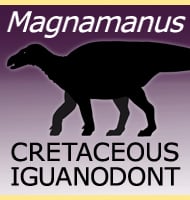Simurghia
In Depth Simurghia is a genus of pterosaur that lived in Africa during the late Cretaceous. The holotype fossils of Simurghia were found in what was a marine environment, strongly showing that Simurghia lived in coastal ecosystems. Further Reading - Late Maastrichtian pterosaurs from North Africa and mass extinction of Pterosauria at the Cretaceous-Paleogene boundary. … Read more
